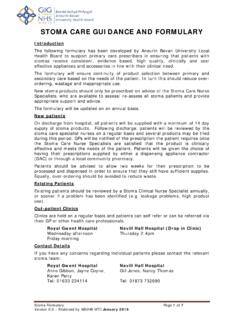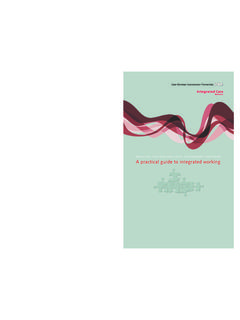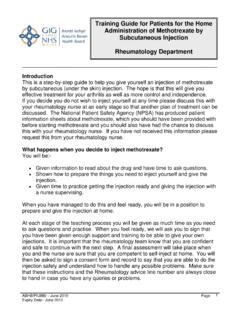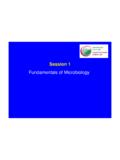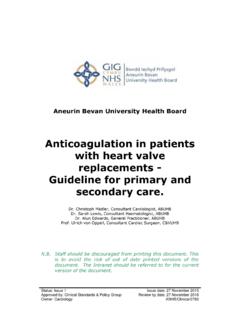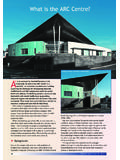Transcription of Peripheral Intravenous Cannulation Best Practice Guidelines
1 ABMU Peripheral cannula best Practice Guidelines , April 2017 Page 1 of 20 Peripheral Intravenous Cannulation Best Practice Guidelines Issue April 2017 Document Author: Paul Lee, Medical Device Training Manager Approved by: Cathy Dowling, Interim Deputy Director of Nursing and Patient Experience Delyth Davies, Head of Nursing: Infection Prevention and Control Date of Original Version: January 2012 Date of Current Version: April 2017 Review Date: April 2020 ABMU Peripheral cannula best Practice Guidelines , April 2017 Page 2 of 20 Issue status Issue Original version (as PVC care bundle) September 2012 Issue Updated cannula record form (3 x cannulae) Added Chloraprep cleaning for skin Updated reference to Epic 3 Guidelines Added no more than 2 failed insertions attempts before seeking extra help to cannula bundle forms (see appendix 3) June 2014 Issue 2 redrafted as best- Practice Guidelines June 2015 Issue Minor typo.
2 Changes, new layout for cannula pack label (includes cannula gauge and ANTT) Added 2%CHG + 70% alcohol wipe for hub disinfection April 2017 CONTENTS Page 1 Introduction Definition 3 2 Scope 3 3 Governance 4 4 Roles and Responsibilities Practitioner inserting Peripheral Intravenous Cannula Staff preparing and second checking the flush solution 4 - 6 4 - 6 6 5 Training and Education Requirements 6 6 Process for Monitoring Compliance and Effectiveness 7 7 ABMU LHB Peripheral Cannula Best Practice Guideline 8,12 8 References, Guidelines and initiatives 13 9 Appendices Appendix 1: Essential elements for insertion of cannula Appendix 2; Essential elements for monitoring cannula Appendix 3: Peripheral IV Cannula Care record form Appendix 4: Removal of Peripheral IV cannula check sheet 14 15 -16 17-18 19 - 20 ABMU Peripheral cannula best Practice Guidelines , April 2017 Page 3 of 20 1.
3 INTRODUCTION This guideline relates to the insertion, maintenance and safe removal of Peripheral Intravenous cannula. It applies to all members of the Health Board multi-professional team and should be followed at all times. Regardless of the type of Peripheral Intravenous cannula used, the principles of care for the device remain the same; To minimise infection risk by always using ANTT (Aseptic Non Touch Technique) To maintain a closed' Intravenous system with minimal connections to reduce the risk of contamination To prevent damage to the device and associated Intravenous equipment To maintain a patent and correctly positioned device Definition A Peripheral vascular access device (VAD) is a device that is inserted into a Peripheral vein for therapeutic purposes administration of medications, fluids and/or blood products.
4 For the purpose of this policy this will be defined as a cannula and the process Cannulation . All Intravenous Peripheral cannulae will be inserted and accessed using Aseptic Non Touch Technique (ANTT) and Standard Infection Control Precautions adopted at all times (SICP). Staff must also adhere to ABMU Policy in relation to the Control of Substances Hazardous to Health (COSHH) Guidelines The practitioner carrying out the procedure is fully accountable and responsible for safe Practice in the insertion and removal of Peripheral Intravenous cannula All practitioners have a professional duty to maintain their knowledge and skill.
5 It is their responsibility to ensure that they undertake this role competently and with the required clinical skills All Peripheral Intravenous Cannulation will be carried out upon the request of a Registered Practitioner. This will be a Medical Practitioner or a Registered Practitioner who is acting upon specific approved protocols and Guidelines All Peripheral Intravenous Cannulation will be carried out in accordance with this guideline. This includes elements for both insertion and ongoing maintenance of the vascular access device 2. SCOPE This policy applies to all practitioners for whom Peripheral Intravenous Cannulation has been identified as required within their clinical role.
6 This will include anyone with an employment or honorary contract of employment with ABMU LHB or who work through temporary or locum agencies ABMU Peripheral cannula best Practice Guidelines , April 2017 Page 4 of 20 3. GOVERNANCE All practitioners new to the role of Peripheral Intravenous Cannulation are required to complete the ABMU LHB approved Peripheral Intravenous Cannulation training package, and deemed competent in using ANTT for the insertion of the Vascular Access Device (VAD) Practitioners for whom the skill has been identified as being required in their role and who have previously been assessed as competent in a different Healthcare Organisation and/or educational setting will be assessed for competency by an IV Cannulation assessor An assessor is identified as a Registered Healthcare Practitioner who has carried out the procedure of Peripheral Intravenous Cannulation for a minimum of 12 months and for whom the procedure is a core element of their Practice All practitioners undertaking this procedure should wear disposable, protective gloves and plastic apron (or clean scrub-suit in theatres environment.)
7 Scrub suits must be changed immediately upon contamination) All Peripheral Intravenous cannula will be inserted using ANTT (Aseptic Non Touch Technique). In order to ensure staff safety, practitioners must not Practice the procedure of Intravenous Peripheral Cannulation on themselves or other colleagues The administration of 5ml of sodium chloride flush is an integral part of Peripheral IV Cannulation and ongoing maintenance and is covered by an organisational patient group directive (PGD) therefore does not require a prescription. However, all IV flushes must be checked , labelled and documented by a second practitioner during their preparation. The tip of the syringe must be protected from contamination and touch by using either a sterile single use caps or returned to its original packaging prior to use The removal of an IV cannula should be performed using ANTT.
8 The device should be removed carefully using a steady movement and pressure applied until haemostasis is achieved. Once inspected, the device should be discarded immediately into a sharps bin (See cannula removal check-sheet: appendix 5) 4. Roles and Responsibilities Practitioner inserting Peripheral Intravenous Cannula. The Practitioner inserting the cannula shall be trained and competent, which will include the following aspects: Appropriate assessment and indications/contraindications for Peripheral cannula insertion Relevant anatomy and physiology ABMU Peripheral cannula best Practice Guidelines , April 2017 Page 5 of 20 Patient identification and informed consent (this may include the parent and/or carer) Appropriate communication with patient, parent and/or carer Appropriate site placement Appropriate visual inspection and palpation techniques Measures to improve venous access Manual holding of a paediatric and/or neonate patient (where appropriate)
9 Appropriate choice of cannula gauge Skin preparation Adherence to using SICP s Demonstrate use of ANTT for insertion, ongoing maintenance (and removal) procedure Correct procedure when obtaining venous blood samples immediately following cannula insertion Use of needle-free connectors Correct dressing placement (including fixation and date strips) Recognition of signs and symptoms for extravasation, infiltration and phlebitis and the relevant action to be taken Side-effects and potential adverse reactions of all medications and fluids being administered Correct sharps handling and waste disposal Appropriate monitoring of the patient following Intravenous Peripheral Cannulation Risk management and patient safety principles Correct procedure for reporting of incidents It is the responsibility of the practitioner to accurately prepare the equipment required.
10 This will include the appropriate second-checking of any flushing solutions The practitioner must ensure correct patient identity and obtain consent according to ABMU LHB policy, prior to Cannulation and any IV administration The practitioner must identify any special instructions, investigations and baseline parameters required, or issues for which advice must be sought, prior to inserting the cannula The practitioner is required to explain, where appropriate, the procedure and potential side effects/adverse reactions and their management to the patient and/or carer. For patients in an outpatient setting and/or who will be leaving the organisation immediately following insertion and removal of a Peripheral Intravenous cannula, written information regarding the side effects/adverse reactions and their action should also be provided The practitioner must assess the patient s physical condition, their fitness for the procedure and the suitability of their venous access prior to inserting the cannula ABMU Peripheral cannula best Practice Guidelines , April 2017 Page 6 of 20 The practitioner inserting the cannula is responsible for preparing, checking.
